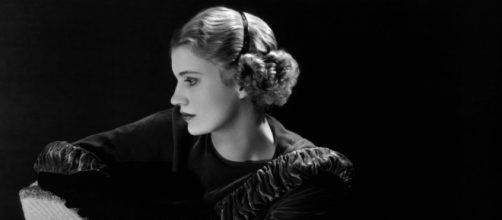This story is a familiar one. A young woman wants to be an artist in an art world dominated by men. She falls for a famous artist who turns out to be possessive and controlling. Ring a bell? Wasn’t that the way it was with Camille Claudel and Rodin, Elizabeth Siddall and Rossetti, Dora Maar and Picasso? It’s practically a cliché.
Fine art photography
But in “Age of Light,” Whitney Scharer’s novel about Lee Mille – the fashion model turned fine art photographer living with Surrealist Man Ray - it doesn’t seem commonplace at all. Instead, Scharer’s playback of Miller’s life seems fresh and incisive.
Her narration of Miller’s thinking behind her every camera shot is so vivid, you’re left wondering if she had been an aspiring photographer once, too. You just can’t make that much camera stuff up.
Scharer’s account of male-female relations is also knowing. As with all love affairs, the one between Miller and Ray starts wonderfully. He is remarkably selfless, sharing his time and talent to teach her darkroom methods of developing film. Famous artists are usually self-absorbed. They probably have to be. But for the first 200 pages, you see this renowned Surrealist continually contribute to Miller’s growth as an artist.
This is especially remarkable given that when Ray met Miller, she was an ex-model alone in Paris and practically a walk-in to Mann’s studio, asking for a job.
And like the typical model who wants to be something more - usually, a movie star or even movie director – Miller dreamt of being a fine art photographer. He shows her how. She took the ball and ran with it.
Giving credit
An exhibit catalog for a Man Ray exhibit at the Norton Museum in 1995 credited Miller for inventing a system of developing a film called solarization that Ray ultimately used in his own work. He then took credit for the technique at the Philadelphia Camera Society competition and even submitted Miller’s work as his. She quit him after that.
Up to the point of their breakup, there were no false notes, no red flags signaling what was to come. When Miller’s talent started to show, Ray wanted payback for his efforts.
He asked for lifelong surrender. He went from selfless to possessive, saying things like, “I have given you so much. I’ve made you so good. You’re so talented now. I feel more justified in loving you… I want you to love me forever.” Things went downhill pretty much after that.
I didn’t see any of that coming, and neither did Miller. Theirs was a love story like any other. Their distinguishing characteristic was their collaboration in the darkroom. In all other ways, they were quite ordinary, pleasuring each other the way couples do, argue in common ways, too. In the end, it was Miller’s evolution as an artist that makes this story worth telling.
Descriptive power
Now, a word about the author.
“Age of Light” is a smart book. But it's the very density of detail that pulls you in, impelling you to leave your world for hers. By necessity, the dialogue and description of Miller’s inner thinking are mostly made up. Entering an artist’s mind is hard to do. You need visual intelligence to pull it off. Scharer owns this.


